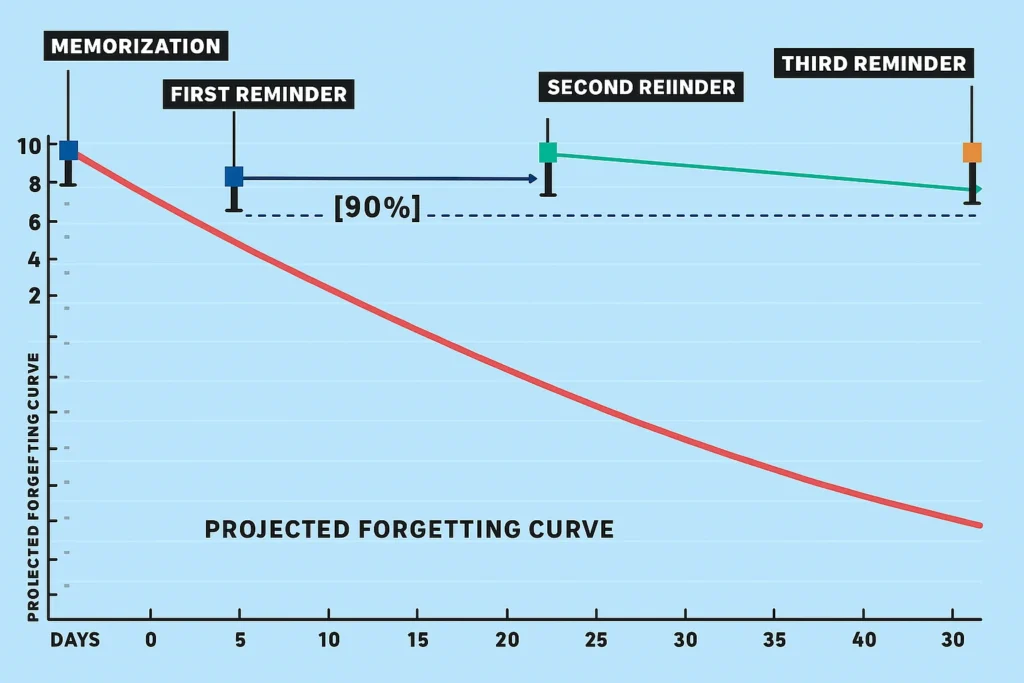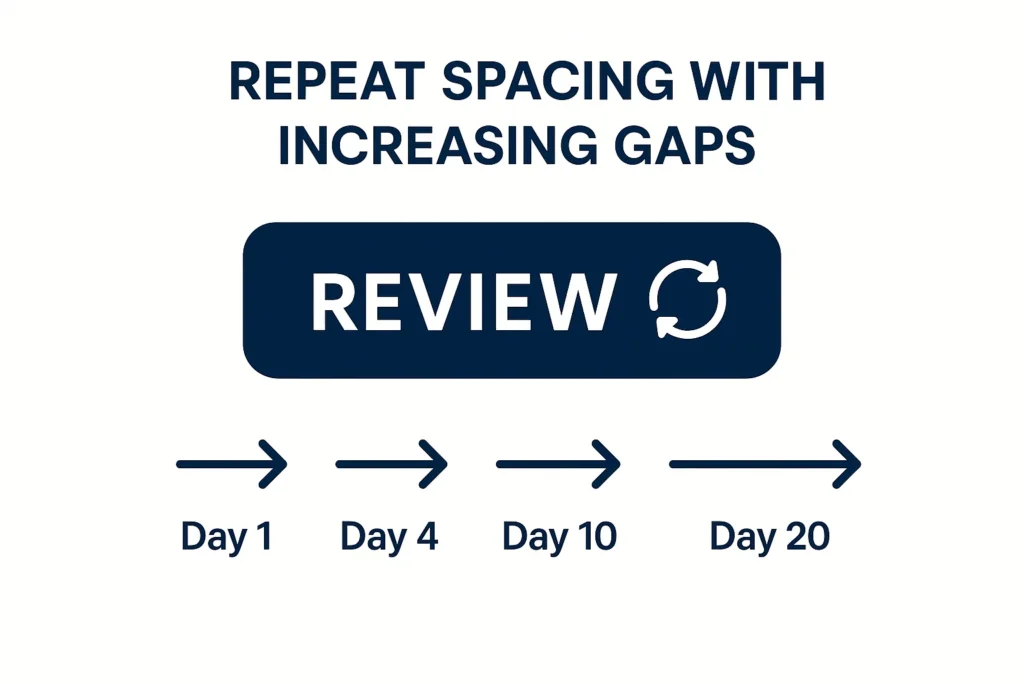Introduction: From Forgetting to Remembering
How often do we teach something only to find students have forgotten it a week later?
That’s not a flaw in your teaching, it’s how memory works. The spacing effect tells us that if we revisit key material at increasingly longer intervals, students are far more likely to retain it. This is the principle behind spaced practice, one of the most effective, evidence-based ways to boost memory retention and improve long-term learning outcomes.
In this post, we’ll explore 10 spaced practice techniques you can start using immediately, no gimmicks, no extra workload. Just clear, classroom-ready tools that work.
If you’re also exploring the role of retrieval, you may find our post on Retrieval Practice: Are We Doing It Right? helpful, it covers how feedback, spacing, and variety shape memory.

What Is Spaced Practice (and Why Does It Work)?
Spaced practice is the strategy of reviewing and retrieving information over time, rather than in a single block. This approach counters the forgetting curve and strengthens neural pathways through active recall and repeated exposure.
Research in cognitive science consistently shows:
- Students who space their practice retain information longer.
- Retrieval is more effortful but more effective when delayed.
- It enhances both accuracy and fluency of recall.
The best part? It doesn’t require fancy tools or hours of prep, just strategic planning.
For a deeper look at how spaced retrieval strengthens long-term recall, check out our full guide on Unlocking Mastery Through Spaced Retrieval Practice, which explains the science in more detail.
The benefits of spacing and retrieval have been widely researched, sites like RetrievalPractice.org offer more studies and teacher resources.
10 Spaced Practice Techniques You Can Use Right Away
1. Retrieval Grids
Create a 3×3 or 4×4 grid with questions from different points in time:
- 2 questions from last lesson
- 2 from last week
- 2 from last term
- 2 from last year
Use them as bell ringers or exit tickets. This approach blends low-stakes quizzing with effective spacing.
2. Brain Dump + Compare
Ask students to write everything they remember about a topic, no notes. Then compare with a knowledge organiser or model answer.
Repeat every 2–3 weeks on the same topic. It’s a simple but powerful spaced recall routine.
3. Retrieval Relay
Students work in small groups. Each member recalls one fact or concept from a spaced topic and passes the “baton” to the next.
Great for revisiting content from multiple units without needing full review lessons.
4. Spaced Vocabulary Practice
Teach key terms and revisit them 3+ times:
- In quizzes with prompts.
- In new contexts.
- With morphology questions (prefixes, synonyms, transformations).
Repeat spacing with increasing gaps: Day 1 → Day 4 → Day 10 → Day 20

5. Flashback Fridays
Use Fridays to review concepts from 2+ weeks ago. Ask:
“What did we study exactly 14 days ago? Can you still explain it?”
Helps avoid over-focusing on just the most recent material.
6. Retrieval Calendar
Create a monthly grid where each week you reintroduce questions from older topics. Keep it visible in your classroom to build routine and student expectation.
7. Exit Quizzes with Mixed Timing
End lessons with 4 questions:
- 1 from today’s topic.
- 1 from last week.
- 1 from last term.
- 1 from a different subject (optional cross-curricular recall).
Students build memory bridges without even realising it.
8. Lagged Homework
Assign revision tasks on older topics, even if you’re teaching something new in class.
Example:
Week 6: In class → Macbeth
Homework → Key quotations from An Inspector Calls
Lagged spacing = stronger storage + surprise retention.
9. Peer Retrieval Games
Students quiz each other using index cards, apps (like Quizlet), or homemade mini booklets. Add a “time delay” rule:
“You can only ask questions from 3+ weeks ago.”
Gamifies the spacing effect naturally.
10. Quote Recall Challenges
Particularly useful for English Lit or History. Ask students to:
- Fill in missing words from a quote.
- Match quotes to themes or moments.
- Write mini paragraphs using spaced-out quotes.
Start with scaffolded prompts, remove gradually over time.
How to Build a Spaced Practice Routine
You don’t need to do all 10 strategies. Start small:
- Pick 1–2 and run them consistently.
- Track what you’ve reviewed (a simple spreadsheet works).
- Give students visibility: tell them why you’re spacing.
The key is consistency over novelty. You’re not trying to dazzle, you’re helping them remember.
Final Thought: Small Efforts, Big Gains
Spaced practice doesn’t demand new tech or shiny tools, just intentional repetition over time. Every time you re-ask a question or revisit a topic weeks later, you’re training your students’ brains to hold on longe
💡 Start with one technique this week. Let your students know why you’re doing it. You’ll be surprised how quickly they get on board, and how much more they’ll remember.




